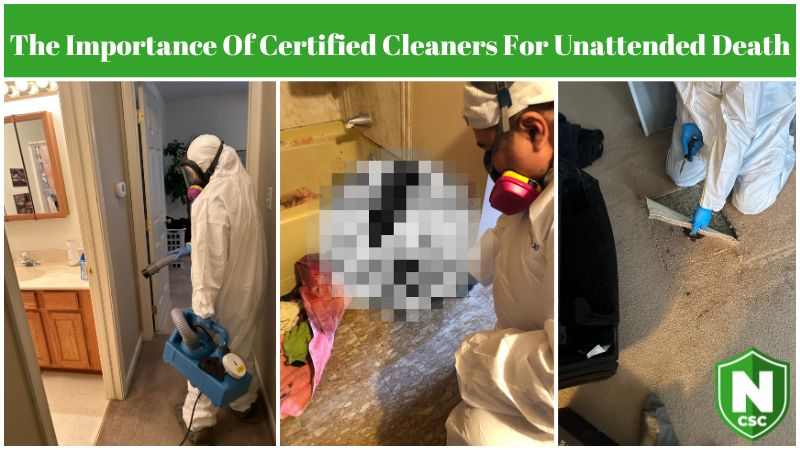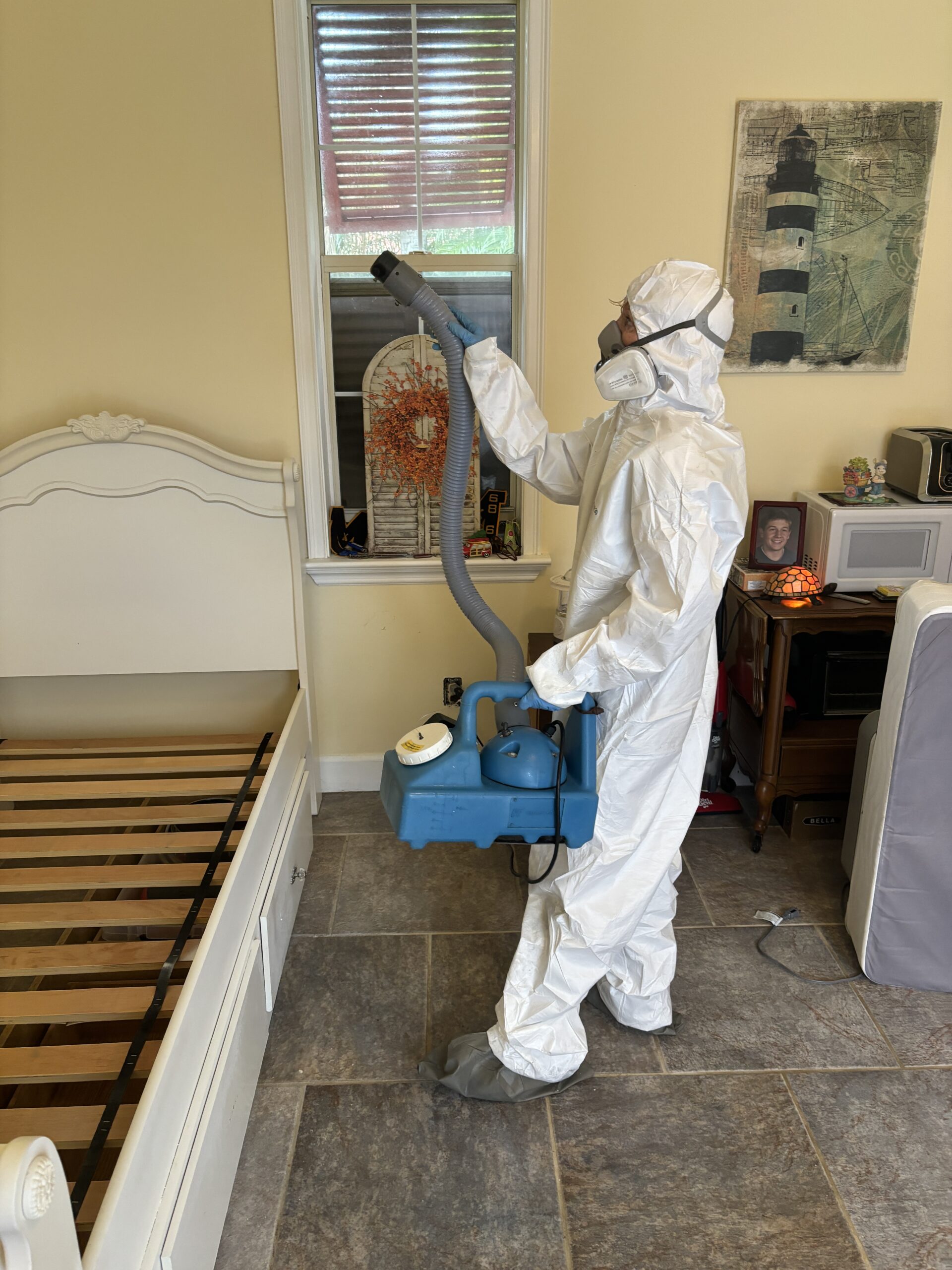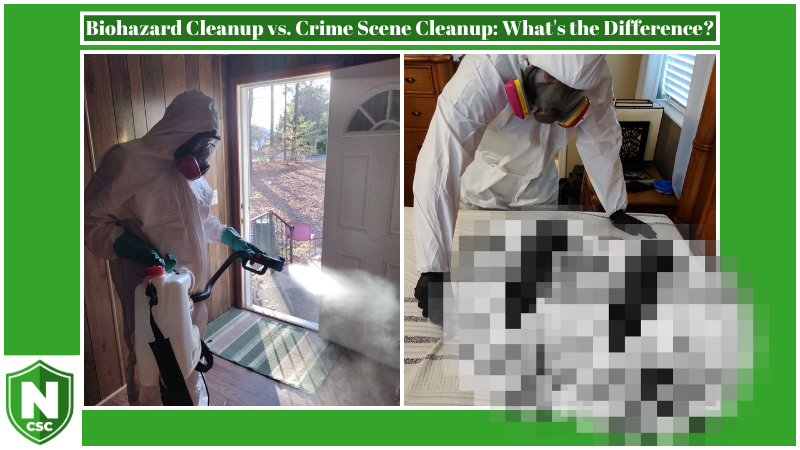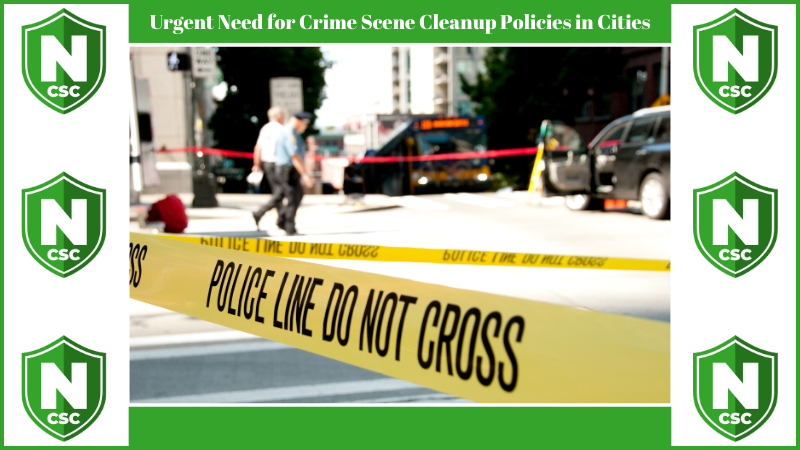The Importance Of Certified Cleaners For Unattended Death

Unattended deaths are distressing and challenging situations that require specialized handling. At National Crime Scene Cleanup, we understand the emotional and physical toll such events can have on families and property owners. In these critical moments, the role of certified cleaners becomes paramount. Certified cleaners possess the expertise, training, and proper equipment to ensure that the scene is thoroughly and safely restored. This blog delves into why relying on certified cleaners for unattended death cleanup is essential, highlighting the key benefits they provide in such sensitive scenarios. From ensuring health and safety to offering peace of mind, discover the crucial reasons why certified cleaners are indispensable in these situations.
The Risks of Improper Unattended Death Cleanup
The improper cleanup of an unattended death scene can pose serious health risks and legal consequences. Unattended death scenes often contain biohazardous materials that require specialized handling and disposal. Attempting to clean up these situations without proper training and equipment can expose individuals to infectious diseases, toxic chemicals, and other hazardous substances.
Homeowners and untrained personnel should never attempt to clean up an unattended death scene themselves. The risks of exposure to bloodborne pathogens, hazardous waste, and other contaminants are simply too great. Improper cleanup can also lead to the spread of infectious diseases and environmental contamination.
Unattended death cleanup should only be performed by certified biohazard remediation professionals who follow strict safety protocols and dispose of all hazardous materials in compliance with local regulations. Cutting corners or taking shortcuts can have devastating consequences for both personal health and legal liability. The risks are simply not worth it – always call in the experts for unattended death cleanup.
Certified Cleaners For Unattended Death Are Essential
When dealing with an unattended death, it is essential to hire certified cleaners to handle the scene. Attempting to clean up an unattended death yourself can expose you to serious health risks and biohazards.
Unattended death scenes often contain hazardous bodily fluids, infectious diseases, and other dangerous contaminants. Improper cleanup can lead to the spread of illnesses and exposure to toxic materials. Certified biohazard cleanup crews are trained to safely dispose of hazardous waste and decontaminate the area to prevent further health risks.
Trying to save money by cleaning up an unattended death yourself is simply not worth the dangers involved. The health risks are far too high. Always hire professionals who are equipped with the right protective gear and disposal methods to handle unattended death scenes properly and safely.
The Dangers of Attempting DIY Unattended Death Cleanup
Attempting DIY unattended death cleanup can be extremely dangerous and should never be undertaken without proper training and certification. Improper cleanup of a death scene can expose individuals to serious health hazards, including exposure to biohazards, infectious diseases, and hazardous materials. The risks associated with DIY unattended death cleanup are significant and should not be underestimated. Untrained individuals may come into contact with:
- Health Hazards:
- Exposure to Biohazards: Blood and bodily fluids can carry pathogens such as HIV, Hepatitis B and C, and other bacteria and viruses. Without proper protective gear and training, there is a high risk of infection.
- Decomposition: Decomposing bodies release harmful bacteria and gases, which can cause respiratory problems and other health issues.
- Emotional Trauma:
- Psychological Impact: Discovering and cleaning up after a loved one’s unattended death can be extremely traumatic, potentially leading to long-lasting emotional and psychological distress.
- Inadequate Cleaning:
- Insufficient Sanitization: Non-professionals may not have the necessary training or equipment to thoroughly clean and disinfect the area, leading to lingering odors and potential health hazards.
- Cross-Contamination: Improper cleaning techniques can spread biohazards to other parts of the property.
- Legal and Safety Concerns:
- Improper Disposal: There are specific regulations regarding the disposal of biohazardous waste. Failure to comply with these laws can result in legal penalties and environmental harm.
- Structural Damage: Decomposition fluids can seep into flooring, walls, and furniture, causing structural damage that requires professional remediation.
- Inadequate Equipment:
- Lack of Proper Tools: Professional cleanup companies use specialized equipment and chemicals designed to safely and effectively clean biohazard scenes, which are typically not available to the general public.
- Hidden Hazards:
- Unseen Contaminants: Blood and fluids can travel through carpets, floorboards, and other materials, creating hidden biohazards that only trained professionals can identify and properly clean.
It is critical that unattended death cleanup is left to certified professionals who have the proper personal protective equipment, cleaning solutions, and disposal methods. Trying to save money by doing it yourself simply isn’t worth the grave dangers involved. Your health and safety should be the top priority when facing such a difficult situation.
Specialized Training and Equipment Needed
Proper training and specialized equipment are essential for safely conducting unattended death cleanup. Biohazard removal training is required to handle the complex protocols involved, as these scenes often contain bloodborne pathogens and other hazardous materials that must be disposed of according to OSHA regulations.

- Hazmat suits: These should be made of a material that is resistant to blood and bodily fluids. They prevent direct contact with biohazards and can be disposed of after use.
- Gloves: These provide protection against bloodborne pathogens and other contaminants. It’s recommended to use double gloves for added safety.
- Face Mask or Respirator: An N95 respirator or a higher-level respirator protects against airborne particles and pathogens. In cases where there are strong odors or airborne pathogens, a full-face respirator with appropriate filters may be necessary.
- Eye Protection: Safety Goggles or a Face Shield protect the eyes from splashes of bodily fluids and other contaminants.
- Boot Covers: These prevent the spread of contaminants from the cleanup area to other parts of the property.
- Hair Cover: A disposable Hair Cover protects hair from contamination and helps prevent the spread of biohazards.
- Apron: This provides an extra layer of protection for the torso and can be especially useful when dealing with large amounts of fluids.
Thorough training on unattended death cleanup procedures, relevant safety protocols, and the proper use of necessary equipment is non-negotiable. Hiring certified professionals is the best way to ensure an unattended death scene is restored safely and in compliance with all applicable laws and regulations.
The Emotional and Psychological Toll of Unattended Death Cleanup
Dealing with the aftermath of an unattended death is an immensely challenging task, not just logistically but also emotionally and psychologically. The cleanup crews tasked with restoring these scenes face trauma and grief that is often overlooked. There is no need for an untrained individual to put themselves through that trauma especially if the deceased is someone close to them.
Beyond the practical demands, empathy and compassion are tools that our cleaners are equipped with. They are prepared to handle the physical and emotional challenges of this demanding job.
The Unattended Death Cleanup Process
Unattended death cleanup is a sensitive and complex process that requires specialized knowledge and equipment. Certified cleaners for unattended death follow industry best practices to ensure a safe and thorough decontamination.
- Assessment and Preparation
- Initial Assessment: Professionals assess the scene to determine the extent of the contamination and the required resources.
- Preparation: Assemble the necessary PPE, cleaning supplies, and equipment
- Securing the Area
- Scene Safety: Ensure the area is secure and restrict access to prevent contamination spread.
- Ventilation: Ventilate the area if possible to reduce odor and exposure to harmful gases.
- PPE Donning
- Proper Gear: Workers put on appropriate PPE, including full-body coveralls, gloves, respirators, eye protection, and boot covers.
- Removal of Biohazards
- Solid Waste: Carefully remove and dispose of any solid waste, such as bodily fluids, tissues, or decomposed matter.
- Fluid Extraction: Use industrial-strength vacuums or absorbents to remove any liquid biohazards.
- Cleaning and Disinfection
- Initial Cleaning: Clean surfaces with detergents to remove visible contaminants.
- Disinfection: Apply hospital-grade disinfectants to all affected areas, ensuring adequate contact time for effective pathogen kill.
- Repetition: This process may be repeated several times to ensure thorough decontamination.
- Odor Removal
- Deodorization: Use specialized equipment such as ozone machines, hydroxyl generators, or air scrubbers to remove persistent odors.
- Air Purification: Employ HEPA air filtration systems to remove airborne contaminants and improve air quality.
- Structural Restoration
- Inspection: Check for structural damage caused by biohazards, such as flooring, walls, or furniture.
- Removal: Remove and dispose of any materials that cannot be adequately cleaned (e.g., carpeting, upholstered furniture).
- Replacement: Replace damaged structural elements as needed.
- Final Inspection
- Quality Check: Conduct a thorough inspection to ensure all areas are clean, sanitized, and free of contaminants.
- Documentation: Document the entire process, including before-and-after photos, for records and insurance purposes.
- PPE Removal and Disposal
- Careful Removal: Remove PPE carefully to avoid self-contamination.
- Disposal: Dispose of all contaminated PPE and cleaning materials according to biohazard waste regulations.
- Post-Cleanup Procedures
- Waste Management: Ensure all biohazard waste is transported and disposed of following local, state, and federal regulations.
- Personal Decontamination: Workers should thoroughly wash and disinfect themselves to remove any residual contaminants.
- Communication and Support
- Client Communication: Inform the client of the completion and provide any necessary documentation or reports.
- Support: Offer resources or referrals for emotional support if needed, as dealing with an unattended death can be traumatic.
These steps help ensure that the area is safe, clean, and free from any health hazards, providing peace of mind for those affected by the unattended death.
Contact National Crime Scene Cleanup
Time is of the essence when dealing with an unattended death scene. The biohazards present pose serious risks to health and safety, and must be addressed immediately by professionals.
Unattended death scenes require specialized hazardous waste disposal and decontamination services to ensure the area is made safe again. Infectious diseases and other dangerous pathogens must be properly contained and eliminated to prevent further spread or contamination.
Do not attempt to clean up an unattended death scene yourself. Contact National Crime Scene Cleanup right away – their team of certified experts has the training and equipment to handle these situations with the utmost care and urgency. Delaying could lead to devastating consequences. Act now to protect yourself and your community.



